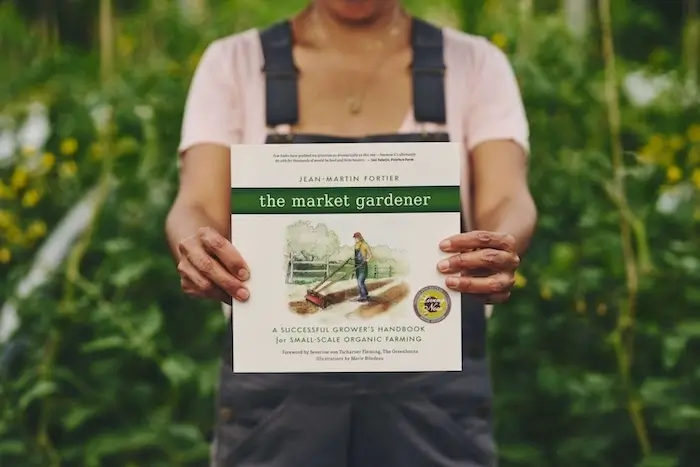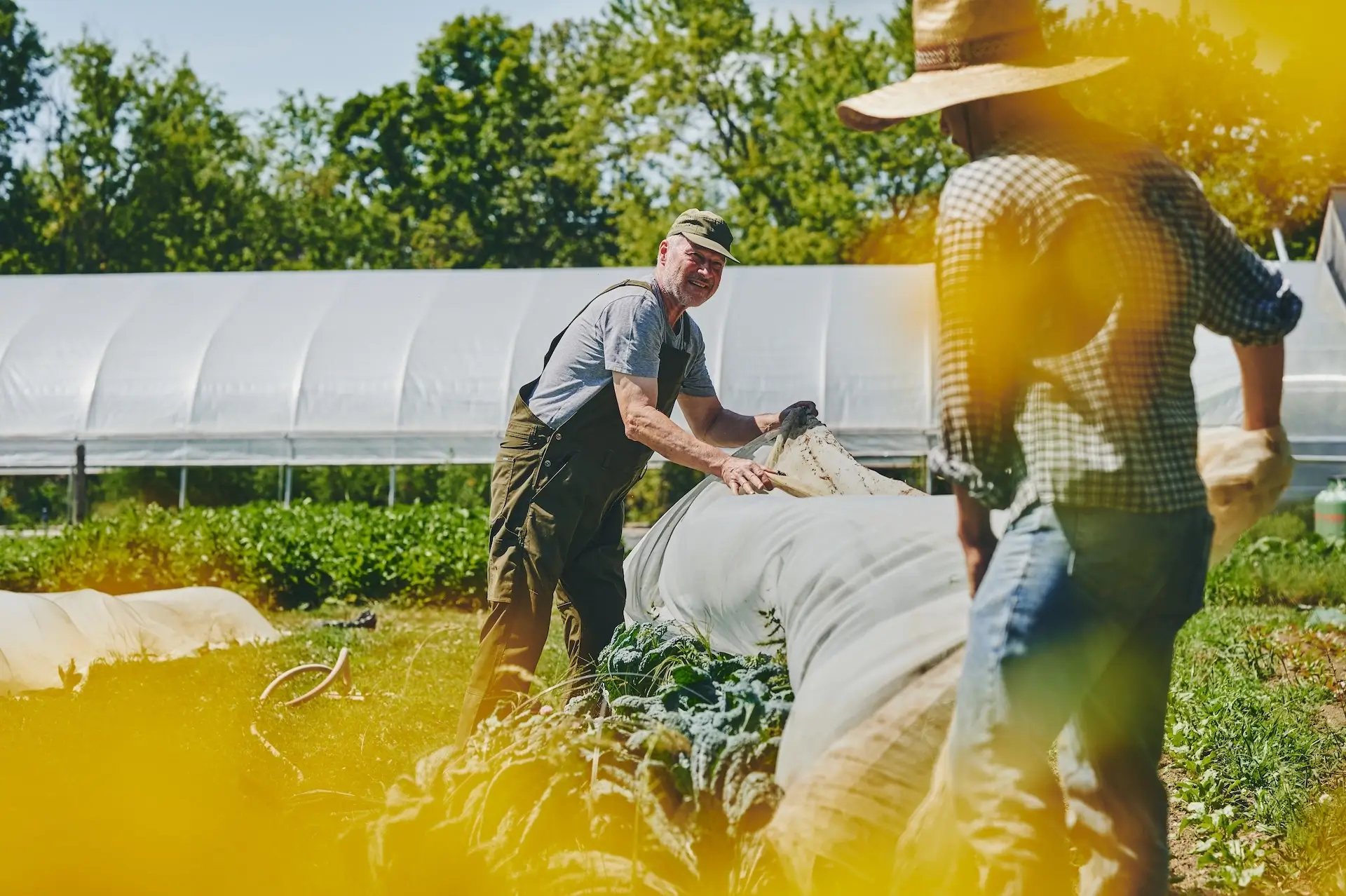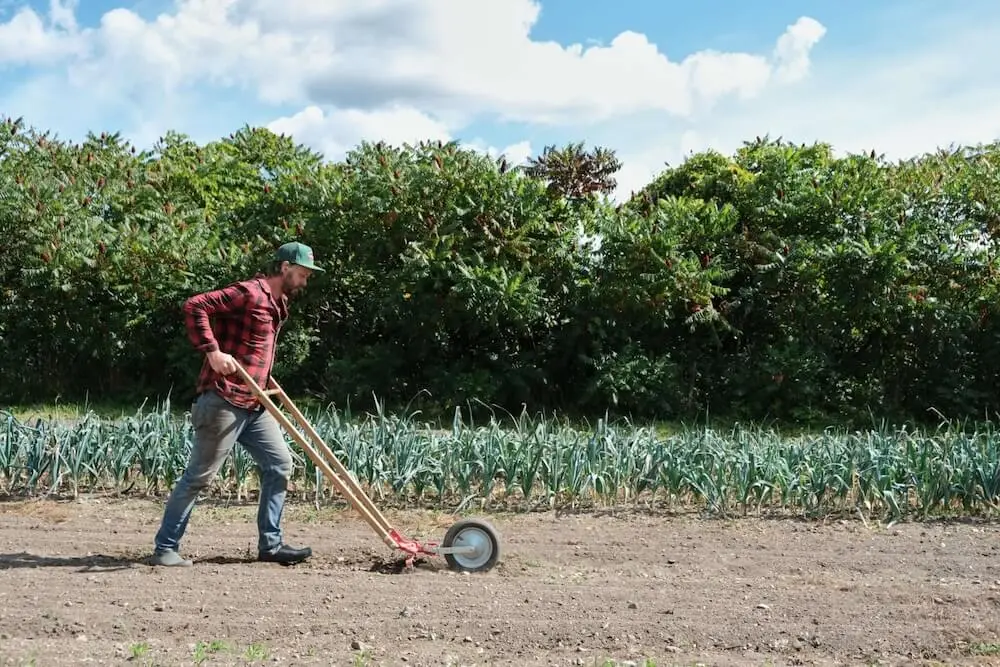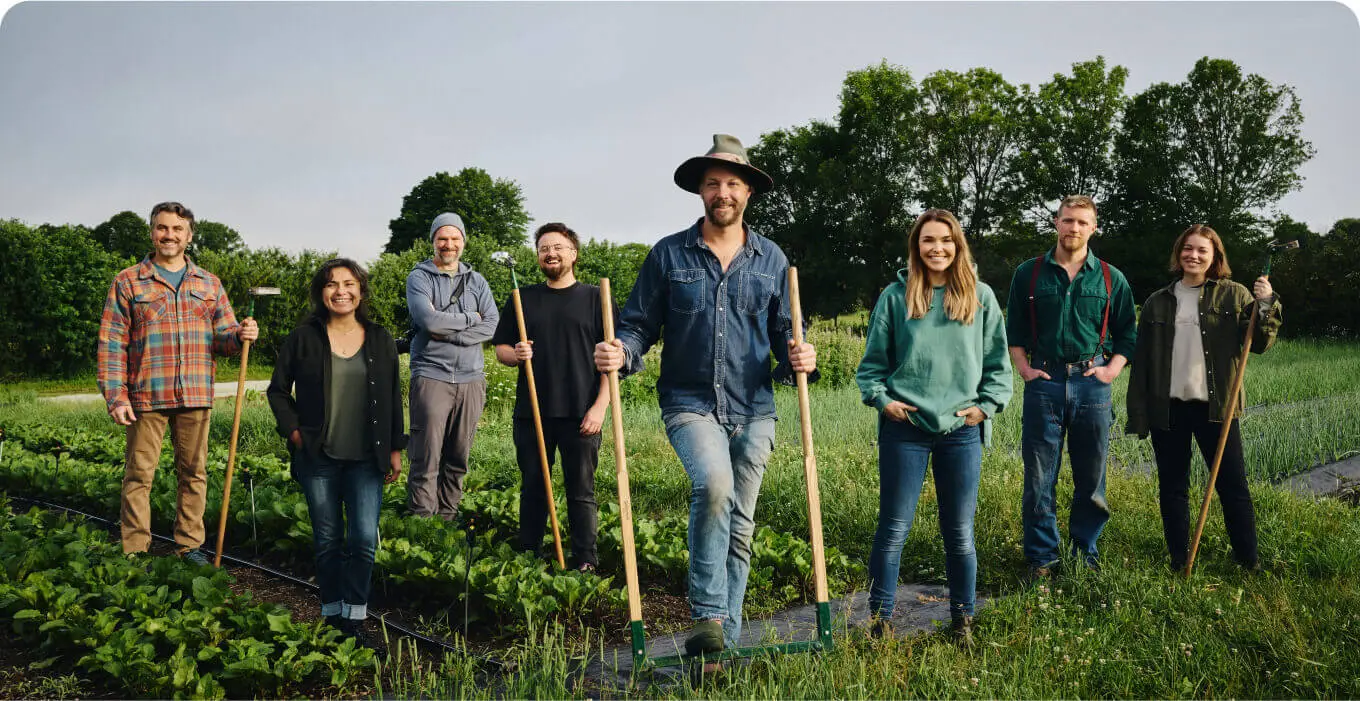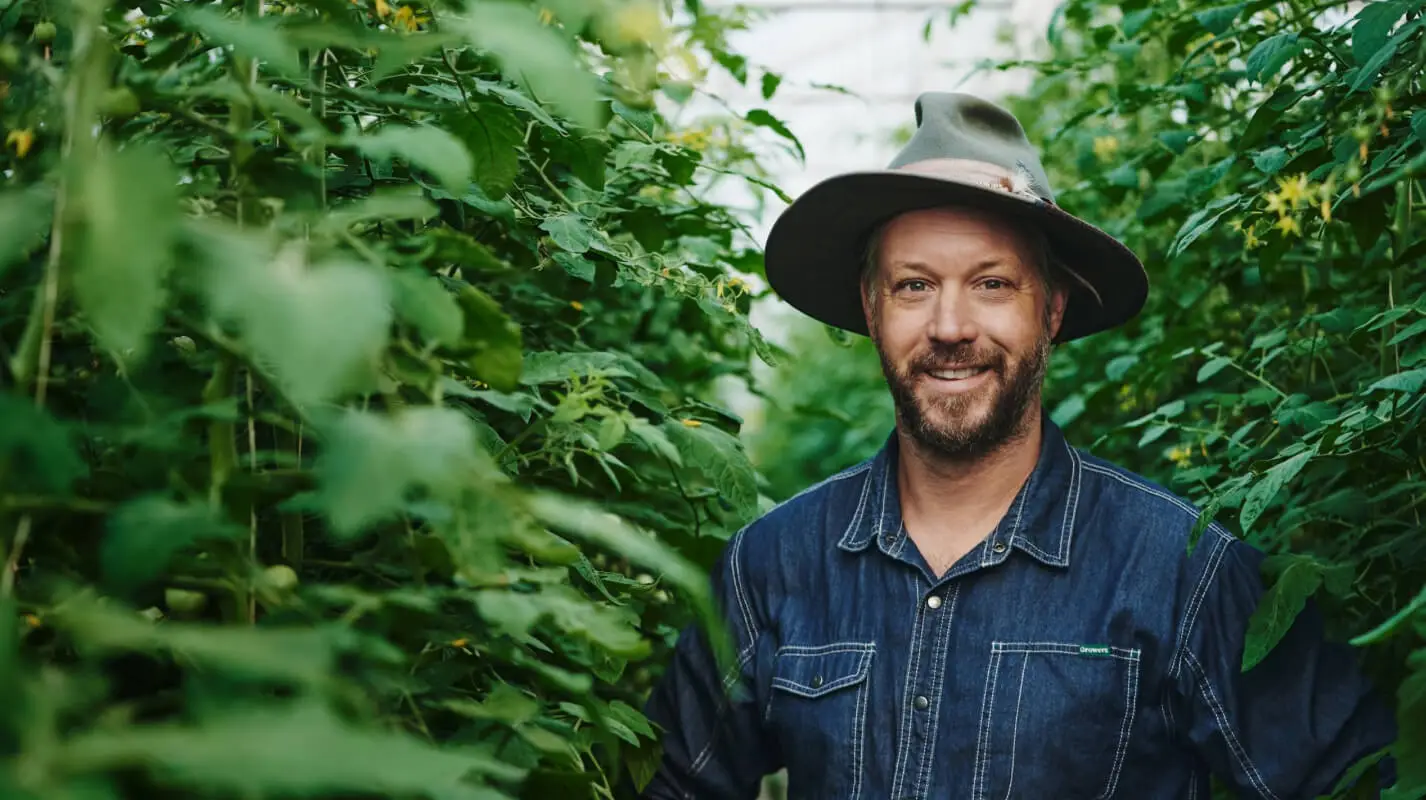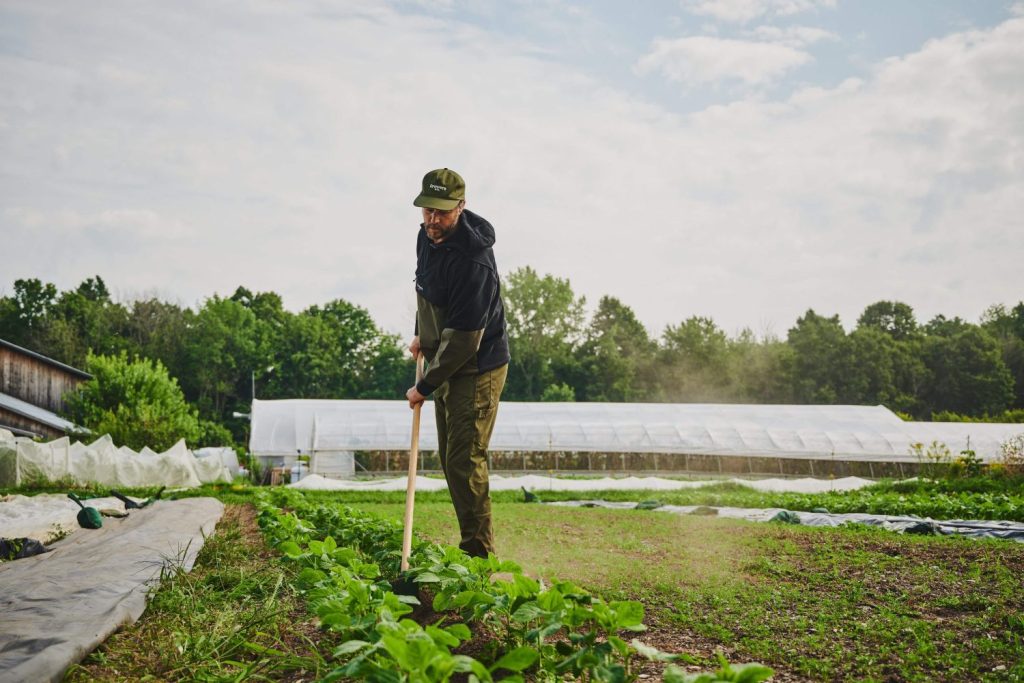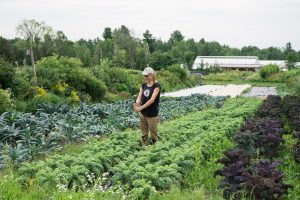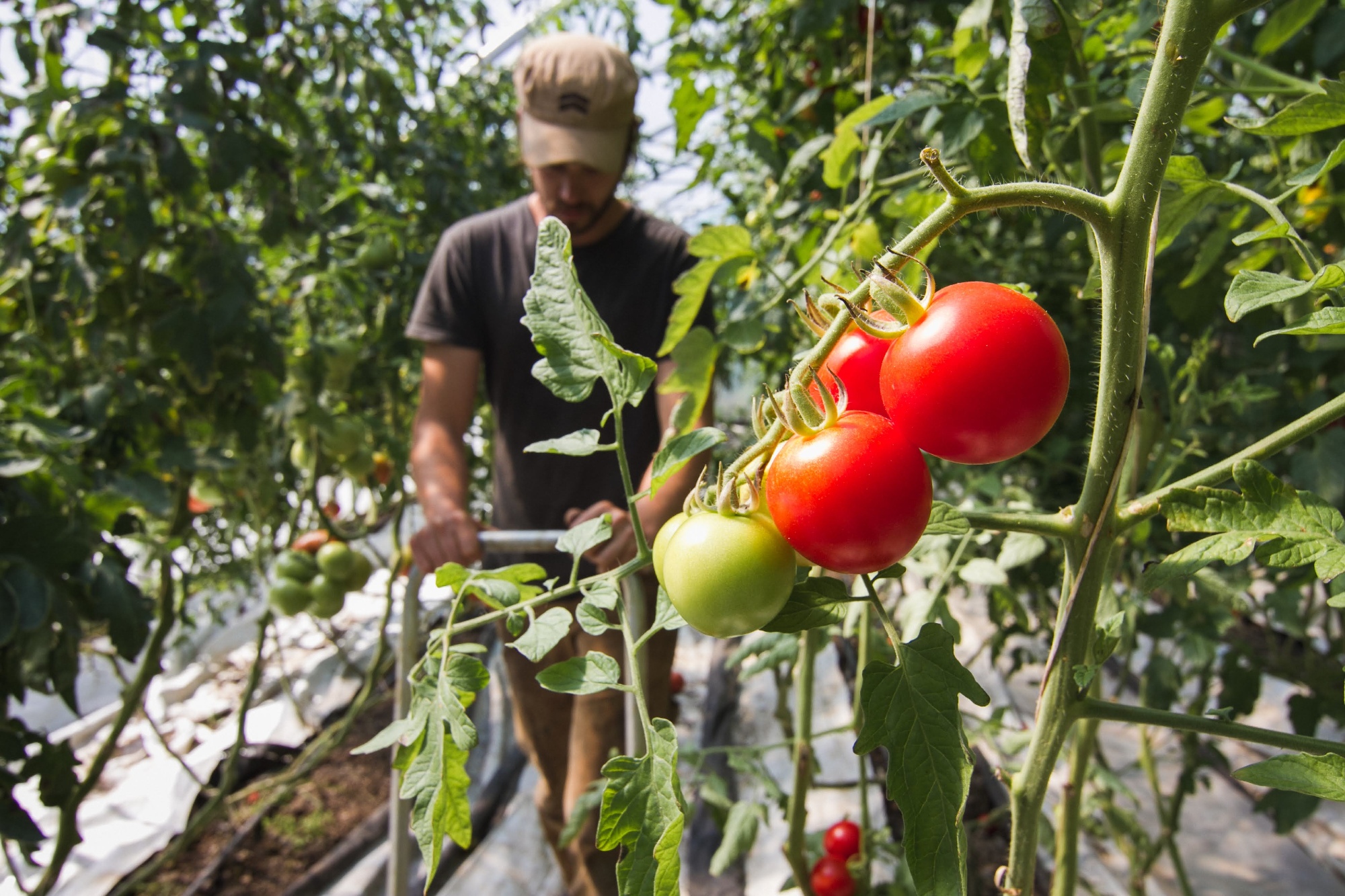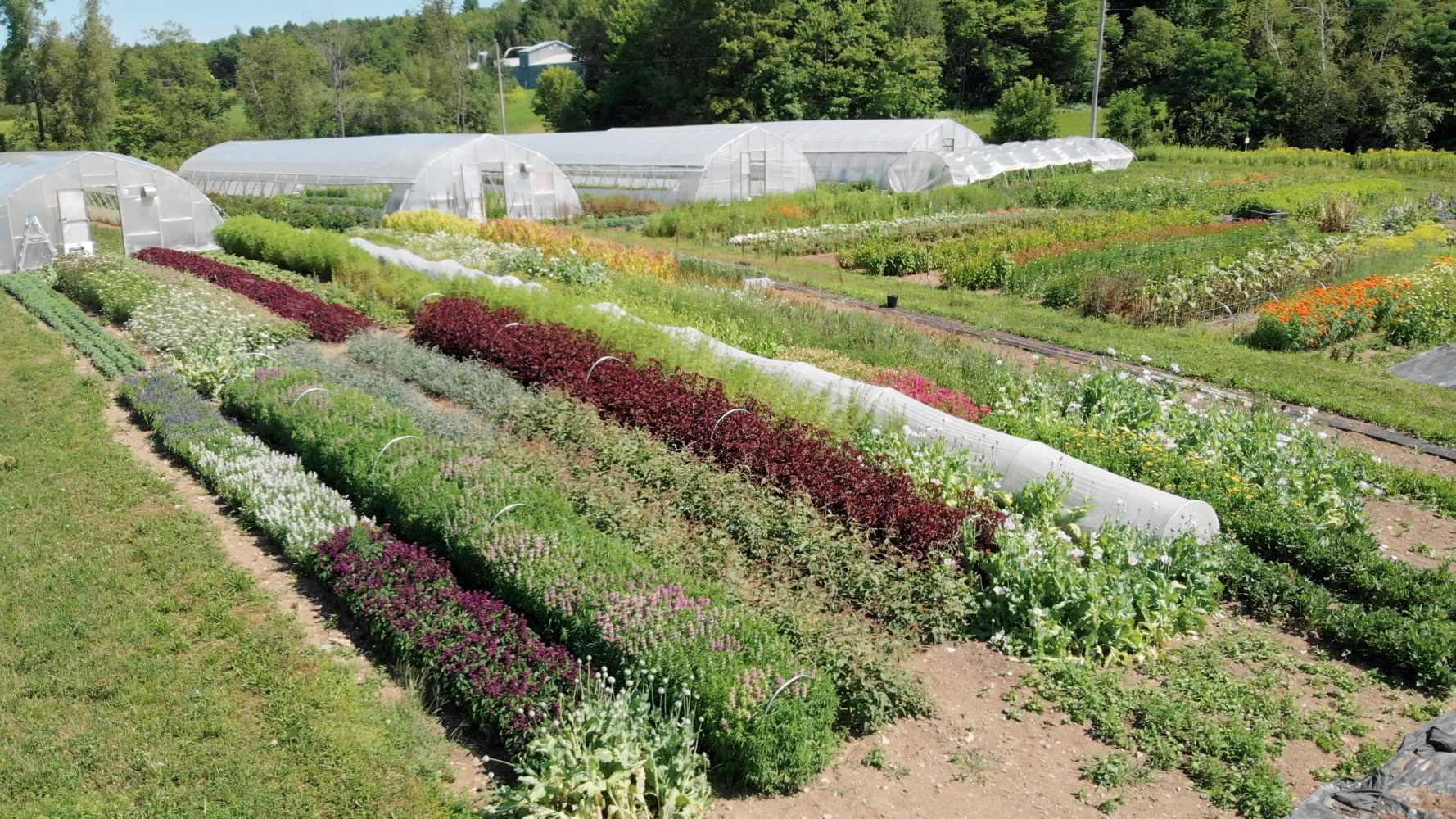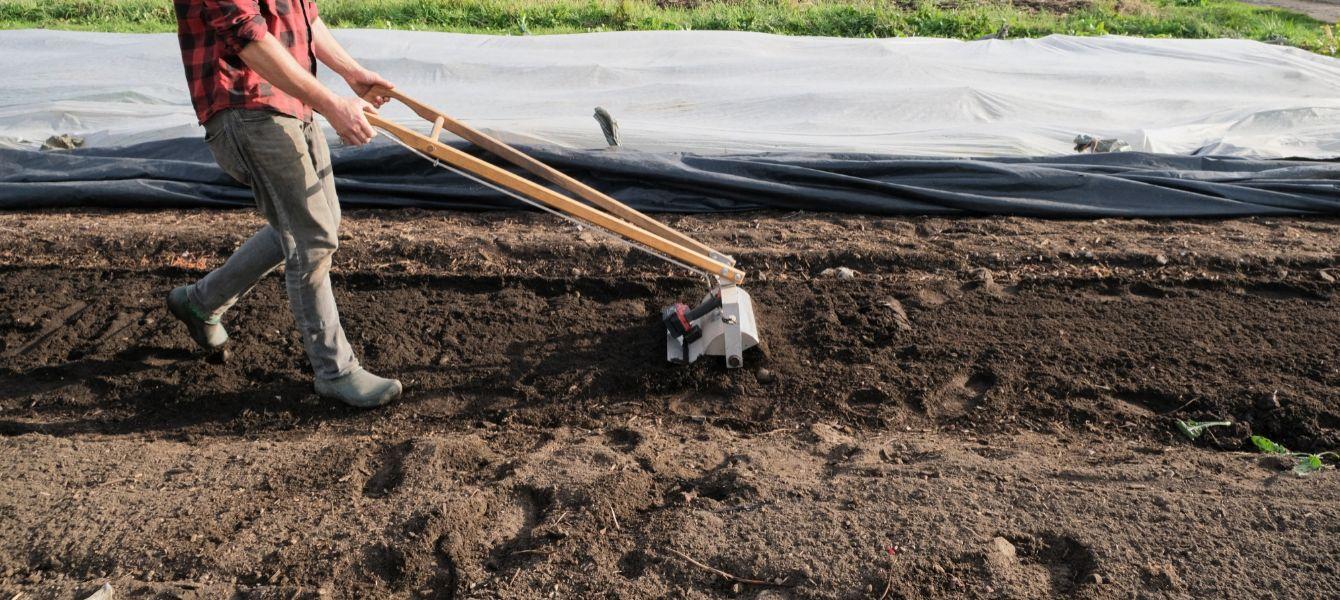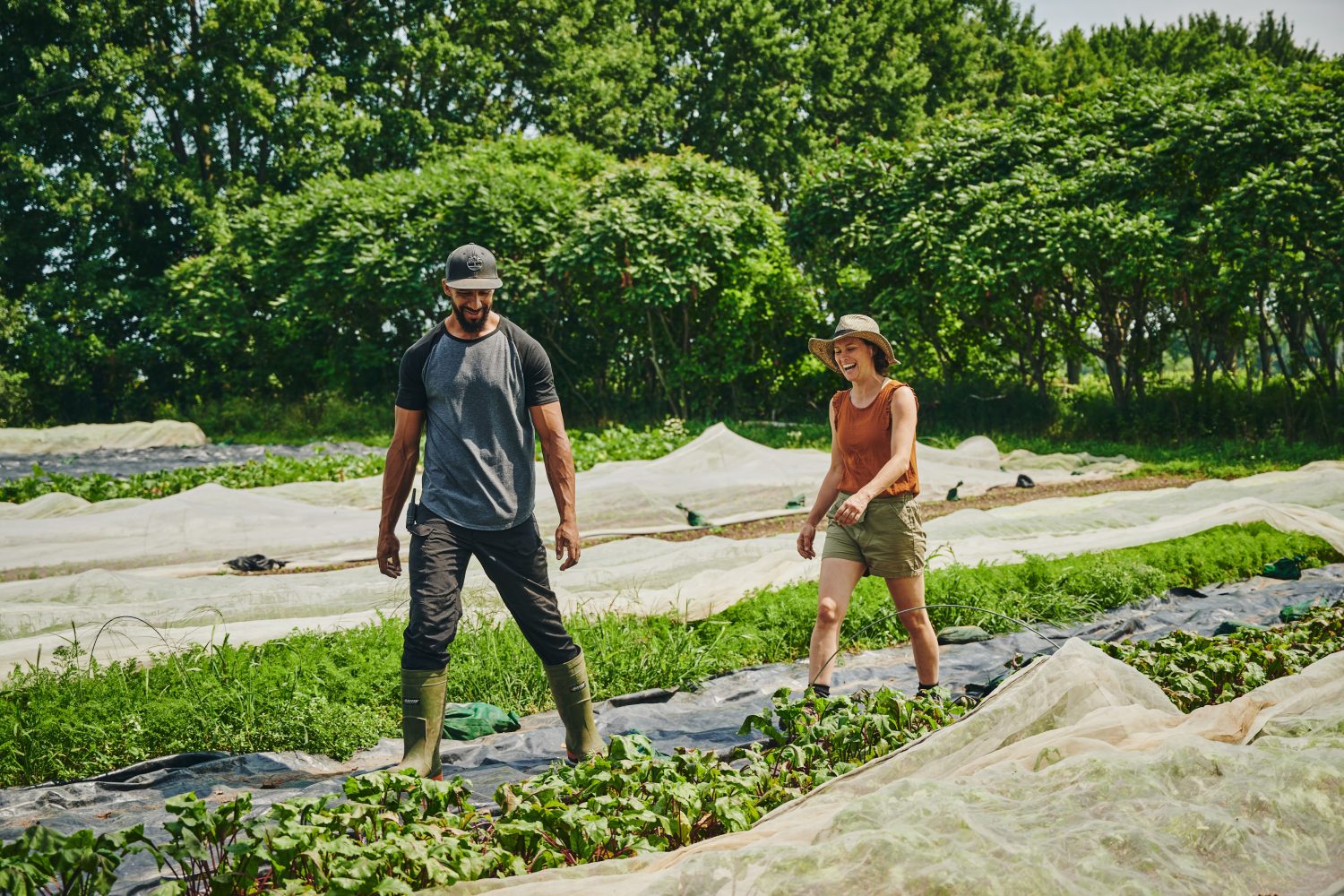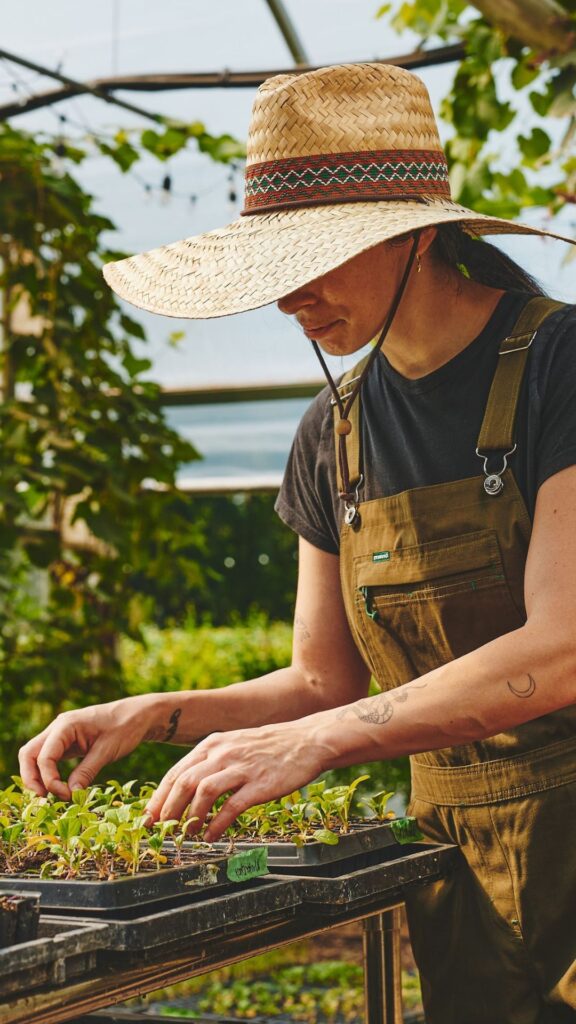You Don’t Need Big Land or Big Capital to Make a Big Living in Farming
How do you start farming with no money? And how much does it really cost to start an organic farm?
These are two of the most common, and pressing, questions I hear from aspiring growers. If you’re wondering how to start a small organic farm in a way that’s affordable and achievable, you’re in the right place.
While there’s no single, precise answer (because every context is different), this article will give you the tools, numbers, and real-world strategies you need to find your answer.
Starting an organic micro-farm is more than just a return to the land — it’s a return to purpose, passion, and independence. And contrary to popular belief, you don’t need hundreds of acres, big tractors, or a massive bank loan to make it work.
Over the past 20 years, I’ve built, refined, and taught a farming model that proves a different path is possible all without mechanization, debt, or land ownership. In fact, many successful market gardeners today farm on rented land, using hand tools, intelligent design, and crop planning to achieve incredible results.
This guide distills the core of that model : a step-by-step approach for starting and scaling a profitable farm on just 2 acres or less. Whether you’re dreaming of your first season or looking to increase returns on your current plot, this method offers practical answers for anyone exploring how to start a small organic farm and build a resilient, rewarding livelihood from the ground up.
Because in today’s world, growing food isn’t just a calling, it’s a viable career.
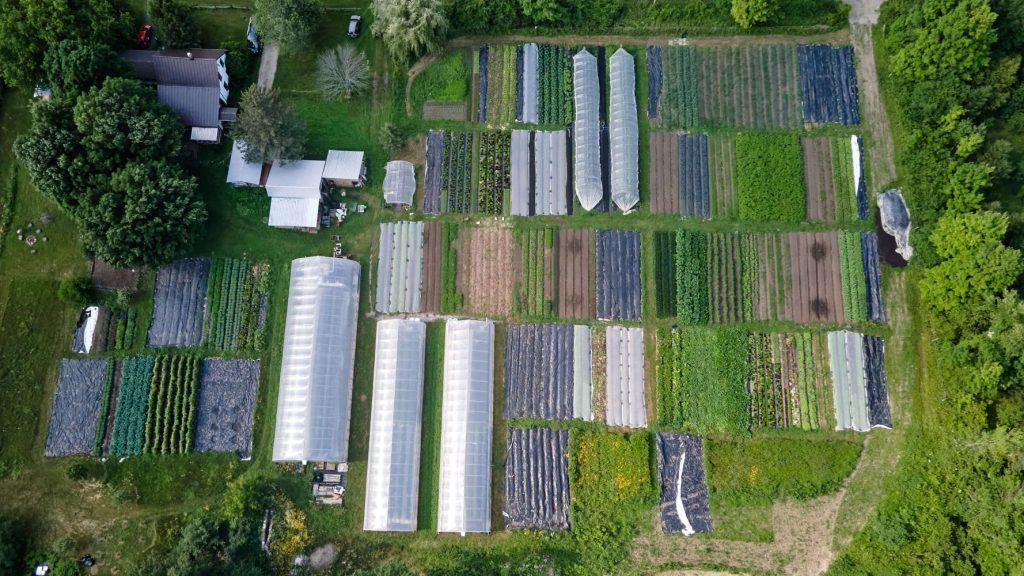
Planting the Seed: Embracing the Dream…and doing the math!
Every great farm begins with a dream. Learning how to start a small organic farm often begins with envisioning what success looks like to you. I remember walking the overgrown field that would become La Grelinette and seeing, not the brambles and grasses, but rows of vibrant vegetables, a greenhouse brimming with life, and a harvest carried by hand to people who would appreciate its value. Your journey will begin the same way: with a vision. What does your ideal farm look like? Do you see rows of greens, fruiting vegetables, or perhaps livestock? Will it serve your family, your neighborhood, or a bustling city market? Envision it. Write it down. Dreaming isn’t just wishful thinking—it’s the foundation for goals and action. The clearer your dream, the more direction and motivation you’ll have when the work gets hard.
To help you clarify that vision, I encourage you to explore different micro-farm models that serve as real-life templates. At the Market Gardening Institute we’ve compiled a document called 2024 Financial Profiles of Small-Scale Farms, which showcases diverse farms from across North America. These examples include farm size, revenue, crops grown, marketing strategies, and even time commitments. You might see yourself in the couple growing salad mix on one acre in British Columbia, or the solo farmer pulling in a strong income from specialty greens and radishes on just a half-acre in Vermont. These profiles provide not only inspiration but a grounded understanding of what’s possible. If you’re researching how to start a small organic farm, these examples offer practical roadmaps you can learn from and adapt.
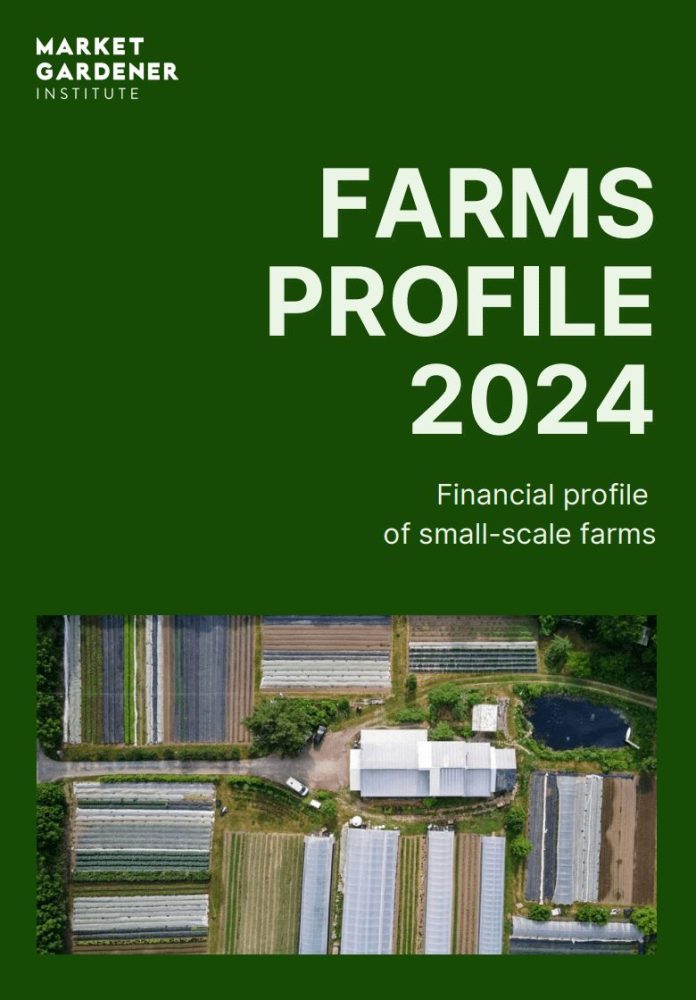
Get access to the real numbers from six small-scale farms for $29!
These farms generously opened their books to empower others, and now, you can benefit! Use it to benchmark your farm, optimize your decisions, and grow sustainably, whether you’re starting out or scaling up.
You’ll discover:
- KPIs like net profit per acre, greenhouse area, and labor cost efficiency
- Transparent year-end results from real farms
- Actionable benchmarks to help you assess and improve your own farm’s financial health
Perfect for: market gardeners, farm consultants, and small-scale agriculture educators.
Take time to go through them. Highlight the ones that resonate. Imagine yourself in their shoes. What would it take to replicate their model in your own context? What might you do differently?
Dreams gain power when they are backed by real-world examples. These profiles will help you take that first vision and begin shaping it into something tangible.
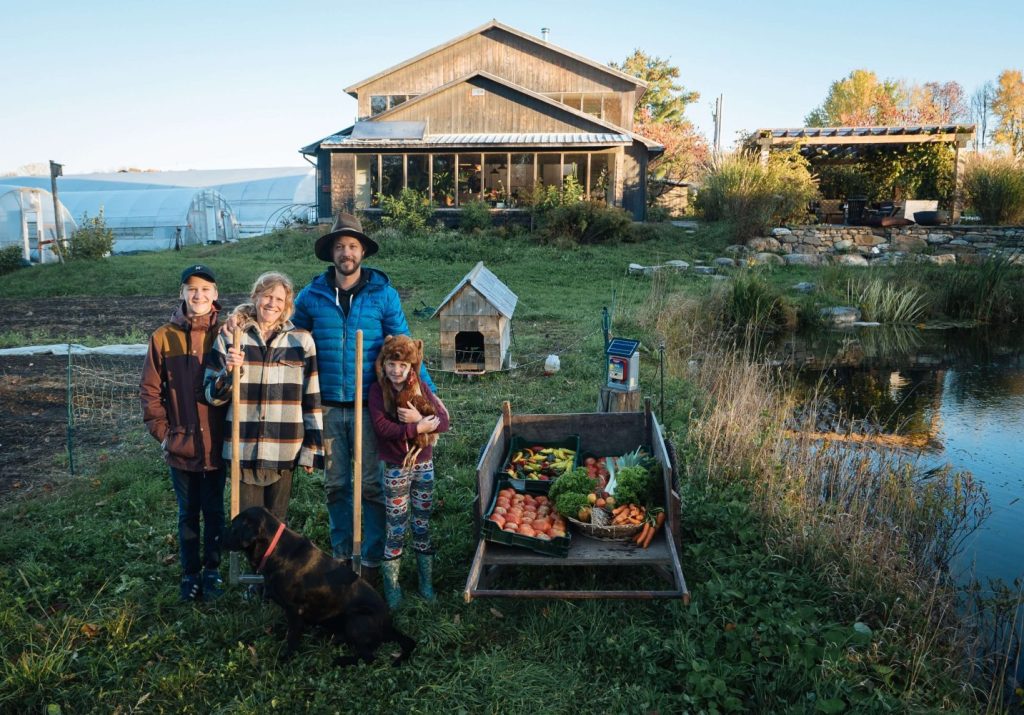
Finding Your “Why”
The road to building a farm is full of obstacles, and your “why” is the compass that will carry you through them. Is your goal to live sustainably? To provide nourishing food to your community? Or to prove that there’s a better way to farm, one that works with nature, not against it?
When Maude-Hélène and I started our journey into farming, our “why” was crystal clear. We wanted to live close to the land, in harmony with nature, and in a way that felt deeply meaningful. We dreamed of raising our children in the countryside, spending our days working outdoors, being our own bosses, and yes, taking winters off to travel.
Later, as our farm life stabilized, we added a new line to our vision: not only did we want to live the good life (and make no mistake, hard work is part of it!), but we also wanted to make a good living. That meant having enough income to save for retirement, send our kids to university, and reinvest in our farm and land.
Fast-forward 20 years, and we’ve done just that. I genuinely believe that the farming model we’ve developed makes this kind of life possible, not just for us, but for others, too. A small farm, done well, can be both a path to personal freedom and a blueprint for a better future.
Your purpose will shape your farm. It will guide every decision, from what you grow, to how you grow it, to how you share it with the world. It’s a foundational step in learning how to start a small organic farm that aligns with your values and lifestyle.
So take the time to reflect: What’s your “why”?
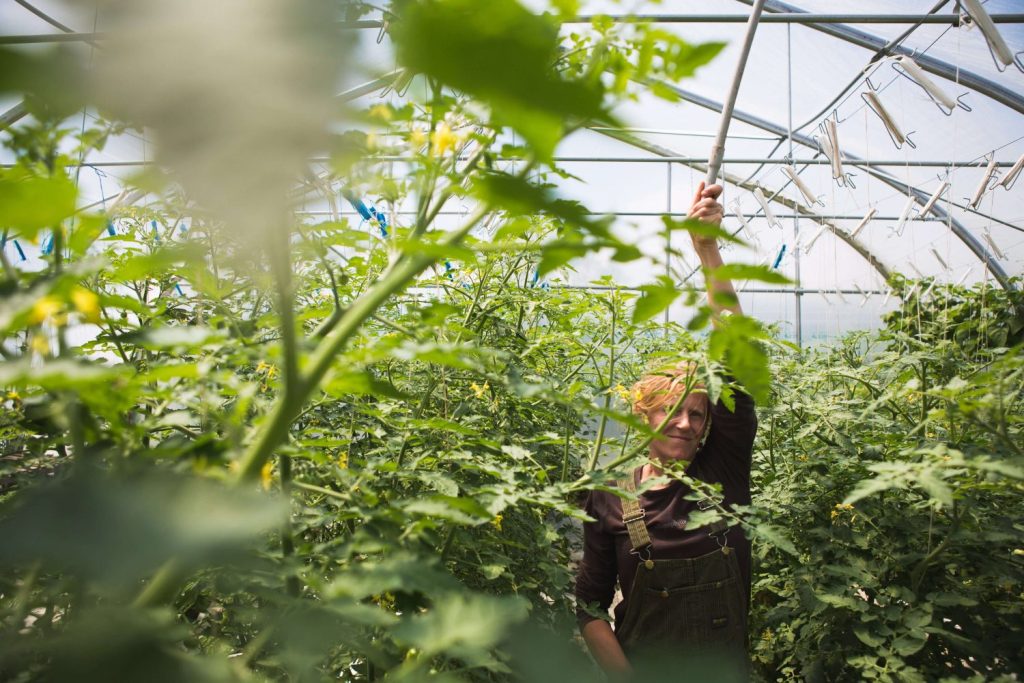
Gaining Knowledge Before the First Bed Is Built
When I started farming, I immersed myself in the wisdom of those who came before me — pioneers like Eliot Coleman, John Jeavons, and Bill Mollison, whose books became my education and compass. Their teachings laid the groundwork for everything I would eventually do.
Over time, I broadened my learning by visiting farms in France, Cuba, and elsewhere. Every family trip became an excuse — and a legitimate expense — to visit farms and learn new growing techniques. Later, we made it a habit to spend our winters attending conferences, reading books, researching in libraries, and eventually studying the work of growers who shared their practices online. Many of these were lesser-known farmers, but real masters of their craft. Our success was built on this steady investment in learning.
For anyone just starting out in farming, my most important advice is this: invest in learning how to grow before you start growing. Don’t rush into building beds or buying tools. Instead, take the time to study. Read. Watch. Volunteer. Intern. Learn from those who’ve done it before. If you’re just figuring out how to start a small organic farm, your most valuable early investment is time spent learning from others.
Before you break ground, take time to study. Read. Watch. Volunteer. Intern. Agricultural guides, organic farming handbooks, and online courses offer valuable insight into sustainable practices, but there’s no substitute for seeing a working farm in action, it’s where knowledge becomes confidence and inspiration turns into skill.
If you can, spend a season working on an established organic farm. There’s no better education than seeing a functioning system in action. You’ll experience the rhythm of the season, learn crop planning, understand workflow — and discover what actually works. That kind of exposure turns knowledge into confidence. To get a better understanding of our small farm is and feels like you can check this video:
Start Small and Start Smart
One of the most common mistakes I see new growers make is starting too big, too fast. The romantic idea of farming often overshadows the practical reality: even a small organic farm is still a business. That means before putting seeds in the ground, you need to put ideas on paper in the form of a clear, detailed business plan.
Start with what you can manage even if that’s a quarter-acre or a large backyard. You don’t need 10 acres, a tractor, or a big bank loan to build a successful farm. But you do need a solid grasp of your numbers. A business plan forces you to map out your crop strategy, estimate expenses and potential income, assess local demand, and plan your market channels. It’s your financial compass and your reality check.
How Much Does It Cost to Start a Small Organic Farm?
If you’re asking yourself how much does it cost to start a small organic farm, the answer is: it depends. First and foremost, it’s because of the land acquisition or rental costs, which vary greatly depending on your location and access. But you can absolutely start on a modest budget if you focus on what truly matters.
Starting small means investing only in the essential tools and infrastructure. Your startup budget should be divided into three key categories (excluding land): infrastructure, machinery, and equipment.
- Infrastructure (≈ 65%): This includes high-impact investments like an automated greenhouse. Although costly upfront, a greenhouse can boost early-season productivity and sales. In my experience, it’s one of the most valuable tools you can implement in your first year.
- Machinery (≈ 15%): The most significant costs here usually go toward a delivery truck, a BCS (walk-behind tractor), and its attachments. These are crucial on a small-scale operation.
- Tools & Equipment (≈ 20%): This includes irrigation systems and hand tools like the broadfork, Jang seeder, harvest bins, and tarps, all essential for efficient, human-scale farming.
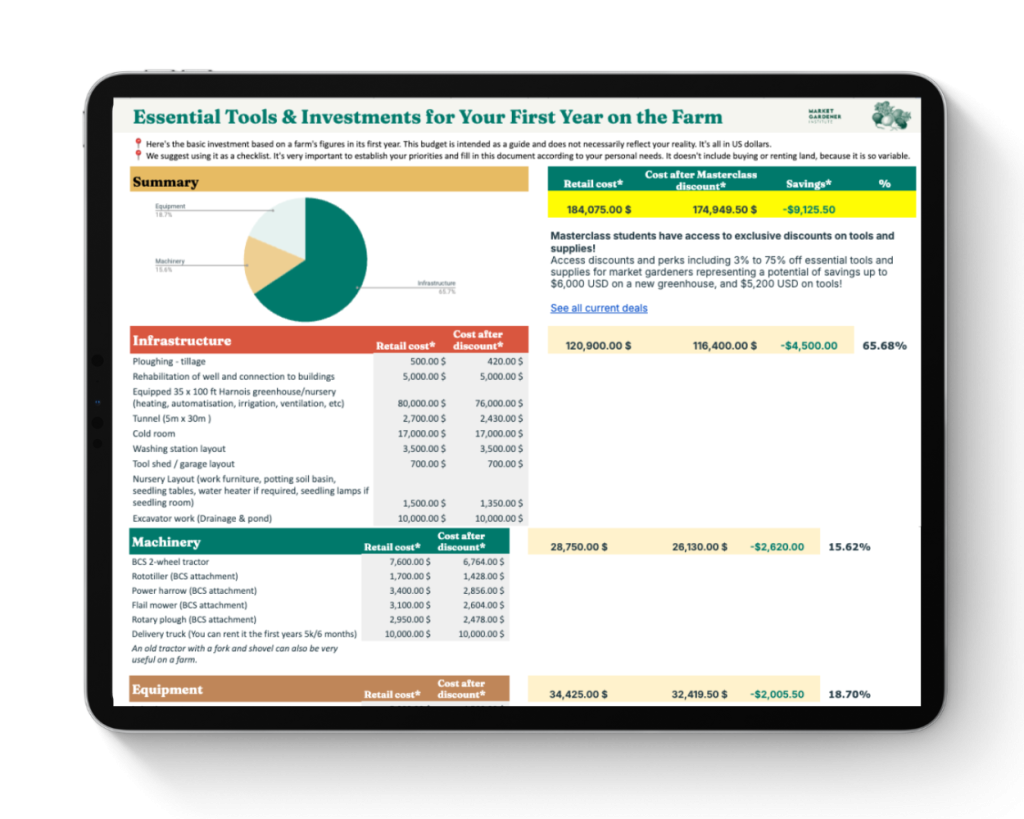
Not sure what to buy in year one?
To help you make informed financial decisions right from the start, we’ve created a free downloadable budget planner. It breaks down in detail the tools and materials we recommend for first-year organic growers and will help you avoid unnecessary purchases, saving you time, money, and headaches.
The truth is, scale and profitability don’t go hand-in-hand in farming. Efficiency, planning, and smart design are the real keys. On our farm, we reached $150,000 in revenue using just 1.5 acres. We did it by focusing on high-turnover crops, tight production scheduling, and a no-waste mindset. Every tool we used was chosen intentionally. Every bed was mapped out with crop successions planned months in advance. Everything was done by hand, but nothing was left to chance.
If you’ve learned enough to feel confident in your growing skills, your next priority isn’t to buy more land or build a fancy greenhouse. It’s to treat your farm like a startup: what’s your product, who’s your customer, what’s your monthly cash flow? That’s what makes farming sustainable, not just ecologically, but financially and personally. This business-first approach is essential for anyone asking how to start a small organic farm and make it last.
Remember: build systems before you build acreage. Think like an entrepreneur, plan like a grower, and keep your vision grounded in numbers. That’s how you start small, start smart and set yourself up for long-term success.
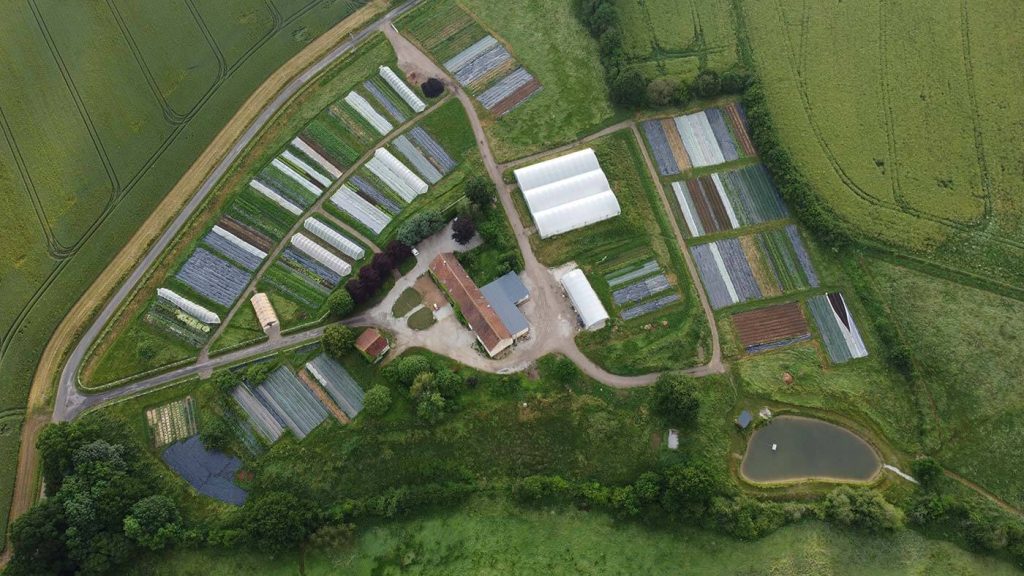
Choosing Land Wisely
If you’re fortunate enough to be choosing your land, take that decision seriously. Where you farm will shape everything, from what you can grow, to how efficiently you can operate, to how successful your business ultimately becomes. It’s not about finding the perfect postcard landscape — it’s about unlocking potential in a place that makes ecological and economic sense.
Start by focusing on the essentials. Prioritize soil quality, water availability, and proximity to your market. These are the three pillars of a viable farm site. Look for land with good drainage, a flat or gently sloping topography, and access to a clean, consistent water source. Avoid low-lying fields prone to flooding or areas that have been heavily sprayed with chemicals over the years — regenerating abused land is possible, but it takes time, resources, and patience.
Soil is everything. It’s not just a medium for holding plants upright — it’s the living foundation of your farm. Knowing how to start a small organic farm includes knowing how to evaluate and care for soil health from the beginning. Get your soil tested early, and keep testing it over time. When we first tested the soil at La Grelinette, we discovered that the organic matter was low and calcium levels were deficient. We spent years building fertility — using compost, green manures, and targeted amendments. That investment paid off many times over. Healthy soil pays dividends in plant vigor, resilience, and yields.
Remember, even suboptimal land can become great land over time, if you’re willing to invest the effort. But good land from the start gives you a head start. And the more you understand about the land you’re choosing, the more equipped you’ll be to design your farm effectively from day one.
For a deeper dive into how to evaluate land and avoid costly mistakes, check out this guide: 6 Things to Consider Before Choosing Farmland It offers practical advice on everything from zoning and access roads to long-term viability and infrastructure — helping you ask the right questions before you commit to a piece of land.
Designing a Micro-Farm: Efficiency and Flow
The physical layout of your farm is more than a convenience, it’s a strategy. A well-designed farm operates like a finely tuned machine, where every step, tool, and structure supports productivity and reduces waste. One of the best decisions we made at La Grelinette was adopting a standardized bed system: 30-inch-wide beds, 100 feet long, with 18- to 24-inch permanent pathways. This simple geometry becomes the backbone of the entire farm. It anchors everything from crop planning and seeding to irrigation, weeding, and harvesting. Efficient design and layout are key components for reducing labor and maximizing output, when considering how to start a small organic farm.
If you’re wondering how to start a small organic farm,
Equally important is zoning your infrastructure. Position your greenhouse, toolshed, wash/pack area, and cold storage strategically close to the production zone. When tools, harvest bins, and storage are just steps away from where you’re working, you save time, reduce fatigue, and keep your energy focused on what matters most: growing.
The flow of the farm should reflect a deep understanding of how your body moves through space as a grower. It’s about working smarter, not harder. As I often say, “Think of the farm as a living organism.” Like a well-functioning body, each part should be connected, responsive, and mutually supportive. When your infrastructure and layout align with your systems, you’re not just farming, you’re orchestrating a rhythm that’s sustainable and joyful.
For a deep dive into the financial and structural strategies behind a successful small-scale farm, including how to design your farm for profitability and quality of life, check out our detailed article on how to run a profitable farm.
Are you interested in farm design?
We’re launching a brand-new course this fall focused entirely on smart, efficient farm layout and systems planning.
Join our waiting list to be the first to know when registration opens:

Equipping Yourself for Success
You don’t need a tractor to start a farm. In fact, at La Grelinette, we built a thriving operation using a well-curated set of simple, efficient hand tools chosen not for scale, but for quality, precision, and versatility. The broadfork remains our foundational tool for aerating beds without disturbing the delicate layers of soil biology. The wheel hoe helps maintain clean pathways with minimal effort. And tools like the flame weeder let us prepare weed-free seedbeds without tilling, preserving soil structure and life.
Other essentials in our toolkit include the Jang seeder for precise sowing, harvest knives for efficient gathering, silage tarps for low-input weed control through occultation, and stacking totes that streamline our harvest and post-harvest handling. These are not expensive machines — they are affordable, scalable solutions for human-scale farming. And for those exploring how to start a small organic farm, choosing the right tools early on can significantly ease your path.
Invest in the best tools you can afford. They are your allies in daily operations, and their reliability often means the difference between frustration and flow. In a small-scale, high-efficiency system, well-chosen tools directly influence productivity, comfort, and long-term success.
Read our detailed blog post to dive deeper into why these tools matter, how they’re used, and which ones are worth prioritizing in your first years on the farm.
To see these tools in action and understand how they fit into a biointensive workflow watch this video :
Planning What to Grow, When: The Key to Micro-Farm Success
Success on a small-scale farm doesn’t come from growing everything — it comes from growing the right things at the right time. Crop planning is the strategic process of aligning your plantings with your climate, market demands, and the biological realities of each crop. When done well, it transforms your limited space into a high-output system.
Effective planning allows you to:
- Maximize each bed’s potential with fast-growing, high-value crops.
- Avoid gaps in production by coordinating successive plantings.
- Rotate crops to maintain healthy soil and prevent pest cycles.
- Align harvests with your sales calendar, CSA drop-offs, or market days.
- Plan labor needs and reduce stress, knowing what’s coming week by week.
It’s not just about what you want to grow, it’s about what will grow well in your context and how each crop fits into the broader system of your farm.
Whether you’re using a whiteboard, a spreadsheet, or specialized software like Heirloom, the goal remains the same: to create a system that flows. By mapping out planting and harvest dates in advance, and being ready to adapt, you gain control over your season — instead of letting the season control you. Want to see crop planning in action?
Soil Is Your Foundation
If there’s one universal truth in farming, it’s this: your soil is everything. Healthy soil grows healthy plants, which grow healthy people and, ultimately, a healthy farm business. Investing in soil health isn’t a task you check off; it’s an ongoing relationship built on understanding, observation, and care. When you’re at this point of looking at the soil of a specific site, start by asking the right questions:
- What is the current level of organic matter?
- How is the structure and tilth — can roots grow deep?
- Is drainage adequate? Are there any compaction layers?
- What’s the pH balance and mineral profile?
- How active is the soil biology?
Rather than relying on synthetic inputs or aggressive tillage, biointensive farming focuses on building living soil, a complex ecosystem of microbes, fungi, organic matter, and mineral balance that sustains plant life naturally. At La Grelinette, we approached soil care as a cornerstone of our system. Here’s how we built our soil over time:
- Compost: Applied generously to every bed before planting to feed microbes and structure.
- Mineral Amendments: Tailored to our soil tests to correct deficiencies, especially in calcium, phosphorus, and trace elements.
- Cover Crops: Oats, peas, and buckwheat during fallow periods helped build organic matter, suppress weeds, and add nitrogen.
- Compost Teas & Inoculants: These living brews stimulated microbial diversity and improved nutrient cycling in the rhizosphere.
- Minimal Tillage: We used a broadfork to aerate and shallow tools like the Tilther to prepare the topsoil, preserving structure and microbial habitat.
- Mulch & Tarps: Used to suppress weeds and protect soil in between plantings, while retaining moisture and encouraging biology.
When you begin to view your soil as a living partner rather than a passive medium, your entire approach shifts. Every amendment, every crop residue, every cover crop becomes part of a system working in harmony to grow stronger, healthier crops, with less input over time.
All these strategies can help you improve your soil, but do you know what’s in your soil? It can be hard to do an assessment of your soil health, but we put together a great ebook with DIY test to learn more about what’s really in your soil.
The tests included in the ebook:
- Assessing soil fertility and texture
- Estimating soil structure
- Measuring soil biological activity
- Test the pH
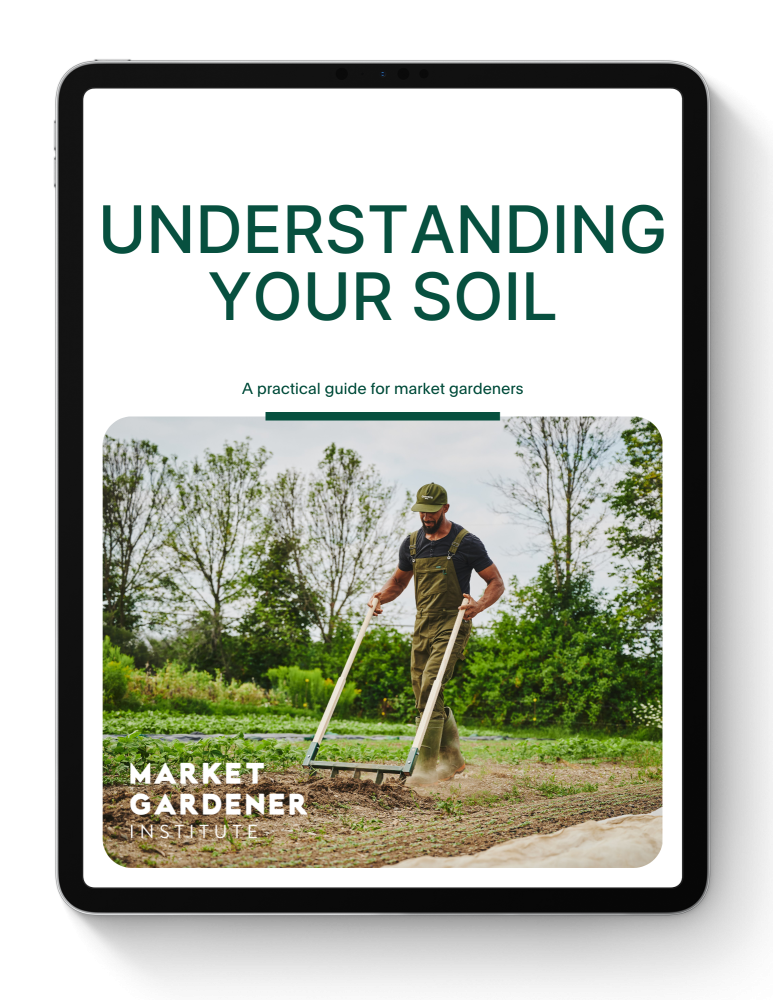
Download our free ebook and start testing and analyzing your soil at home with simple, proven methods.
Curious about how to build soil health from scratch? Download our free eBook:
Selling What You Grow
Seeding is only half the job — selling is the other half. No matter how beautiful your crops are, they won’t support your farm unless you can get them into the hands of customers who value what you do. That’s why marketing and sales strategy need to be woven into your business plan from the very beginning, not treated as an afterthought.
A successful sales strategy starts with understanding your local market. You need to know who your customers are, what they want, where they’re already shopping, and what gaps exist in the availability of fresh, local, organic produce. Ask yourself: Are people in your community looking for baby greens, heirloom tomatoes, or seasonal root vegetables? What are they willing to pay? How saturated is the market with similar offerings? Knowing the answers to these questions will help you grow crops that are not only delicious but also in demand.
From there, consider which sales channels make the most sense for your farm. Farmers’ markets are a great place to connect with your community, offering visibility and direct feedback. Community Supported Agriculture (CSA) programs provide predictable revenue and build loyal relationships with customers who invest in your season from the start. Restaurants and caterers can be a lucrative option if you can supply consistent quantities with reliable quality. And if you’re located near a well-trafficked road or in a tight-knit village, an on-farm stand might become one of your best outlets.
But marketing isn’t just about where and how you sell—it’s about who you are. People don’t just buy vegetables; they buy values. They buy freshness, transparency, trust, and a sense of belonging. Your story, your farming philosophy, and your connection to the land can become powerful tools to attract and retain customers. At La Grelinette, our CSA members returned year after year not just for the food, but because they believed in our approach. They told their friends, shared our newsletters, and became part of our extended farm family.
Selling well is about building that kind of relationship with your buyers. It’s how you turn your fieldwork into income and your mission into impact. If you’re looking for guidance on how to do this effectively, I highly recommend this short but powerful video. It outlines the key principles of smart marketing for small-scale organic farms and will help you start building your own sales success story:
In the end, your vegetables are only as valuable as your ability to move them into kitchens and communities. Make marketing a core part of your strategy—not just to make a living, but to share your values and make a difference.
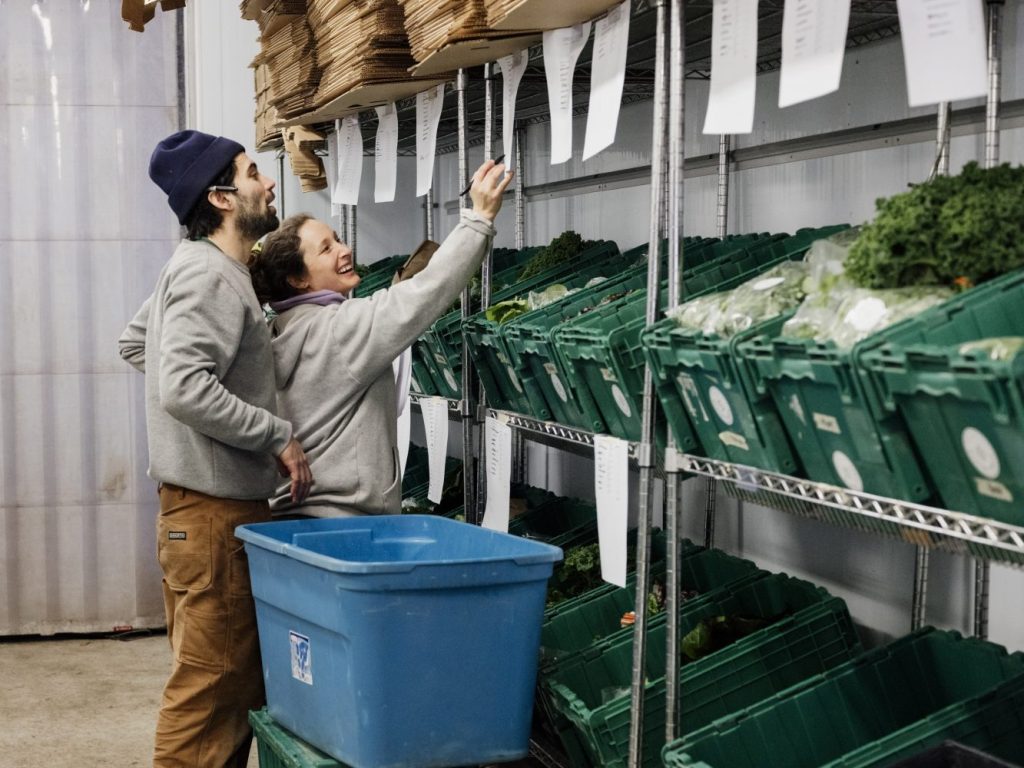
Post-Harvest Matters
One of the most overlooked, and yet absolutely critical aspects of running a successful farm is post-harvest handling. You can grow the most beautiful, nutrient-dense vegetables, but if they wilt, bruise, or spoil before reaching the customer, they lose both value and appeal. That’s why designing a well-organized, weatherproof, and efficient wash/pack station is essential, especially on a small farm where quality is everything.
At La Grelinette, we treated post-harvest as a production priority. Before our first harvest, we set up a dedicated wash/pack station designed to handle produce quickly, cleanly, and safely. It wasn’t fancy, but it was functional: shaded from the elements, well-drained, and stocked with tools that allowed us to maintain high standards week after week. Nothing fancy, but everything works together in a flow-like manner.
A successful wash/pack area should be planned as early as your first beds. You want to protect it from weather, ensure good lighting for safety and visibility, and have a high-quality, potable water source. Plumbing also matters—design your system with both water in and water out in mind, using wide drainage pipes that can handle bulk use during peak harvest days. Don’t forget to consider both pressure and volume: nothing slows down your harvest crew like weak water flow or clogged drains.
Within the wash/pack station itself, think through every step of your process. A professional setup might include a general washing sink, a greens bubbler for cleaning salad mix, a Hudson float valve to regulate water levels, and a salad spinner or drying screen to remove moisture efficiently. You’ll also want a fry basket for smaller crops, a dedicated packing table, and a wire rack on wheels to help with organization and movement. A reliable digital scale is a must for CSA shares and wholesale orders, and your packaging—bags or containers—should be clean, consistent, and easy to use.
Finally, refrigeration is crucial. Whether it’s a CoolBot-powered walk-in cooler or a second-hand restaurant fridge, maintaining the cold chain after harvest can double the shelf life of your produce and protect your brand. At La Grelinette, our investment in post-harvest quality paid off in customer loyalty. Our CSA members returned year after year because they knew our food would arrive fresh, clean, and ready to use.
When I helped design and run the wash/pack station at Ferme des Quatre-Temps, we applied all of these principles to build an operation that was efficient, ergonomic, and scalable. You can see this exact setup in action in this detailed walkthrough video.
At the Market Gardener Institute, we also provide resources and consulting to help you build or improve your post-harvest infrastructure—because this phase is just as vital as seeding or harvesting. It’s where your hard work becomes your product, and where consistency turns into customer loyalty.
After all, it’s not just about growing great vegetables, it’s about delivering them fresh, clean, and beautiful every single time.
Choosing the Right Crops from the Start
When starting a farm, one of the most critical decisions you’ll make is what to grow. Crop selection can determine not only your workload but your profitability. The goal is to focus on high-value, fast-growing crops that offer strong returns per square foot and match your market’s needs. One of the core principles of biointensive micro-farming is focusing on crops that give you the highest return per square foot. When your entire operation is under 2 acres, every inch counts—and growing the right crops at the right time can mean the difference between scraping by and building a thriving, profitable business.
At La Grelinette, we didn’t try to grow everything. Instead, we carefully selected a suite of high-value crops that were fast-growing, high-yielding, and in constant demand at local markets and restaurants. Crops like baby greens, salad mix, carrots, radishes, green onions, and greenhouse string beans became our bread and butter. These aren’t just “easy” crops—they’re crops that turn over quickly, fetch premium prices, and can be grown successively throughout the season to keep cash flow consistent.
To farm profitably, you must consider more than just what grows well—you need to understand what sells well, what customers consistently ask for, and what crops offer the best $/bed/day value. Profitability is not just about output. It’s about smart choices, market alignment, and precise planning.
In the article 15 Most Profitable Crops For Small Farms, I break down the key crops that can make a big difference on a small farm, crops we’ve grown ourselves because they’re fast, productive, and in high demand. Want to see it all in action? I walk you through everything in this video: which crops we prioritize, why they’re so efficient, and how they fit into a smart, profitable farm plan. You’ll also see how tools, timing, and quick bed turnover play a huge role in boosting your bottom line.
If you want to dive deeper, our online signature course, the Market Gardener Masterclass, offers many resources to help you manage a profitable farm, including full crop profitability charts, yield calculators, and crop itineraries to help you replicate what has worked for us and many others.
Build Community, Keep Learning, and Start Your Journey
Farming the most lucrative crops doesn’t mean compromising your values it means being strategic so you can keep doing what you love, year after year. It allows you to invest back into your farm, your soil, your team, and your quality of life.
No farmer is an island. One of the most rewarding, and essential, aspects of starting a farm is building a strong, supportive network. Your success will depend not only on the crops you grow but also on the relationships you cultivate. Whether it’s learning from a mentor, trading tips with fellow growers, or connecting with your customers, farming thrives on community. Ask questions. Share your knowledge. Celebrate the wins—yours and others’. The farming world is full of generous, passionate people, and when we collaborate, we all grow stronger. As you learn how to start a small organic farm, connecting with experienced growers can fast-track your progress and build your confidence.
And never stop learning. Farming is a living craft—rooted in tradition, refined by science, and shaped by experience. Read widely. Watch how others work. Attend local and international workshops. Join grower networks, online forums, and on-farm events. Surround yourself with people who inspire and challenge you to keep improving. Every season offers new lessons; every setback holds insight. Mastery comes with time, and humility is a farmer’s greatest strength.
Whether it’s mastering your tools, building systems, or choosing your crops wisely, it all comes together when you invest in your education and your community.
Final Thoughts
Starting a micro-farm is not easy, but it’s one of the most meaningful journeys you can undertake. If you’re serious about learning how to start a small organic farm that’s both ethical and profitable, there’s never been a better time to begin. You’ll work hard, but with a purpose that fills your days with meaning. You’ll face challenges, but each one will make you stronger, more resilient, and more capable. And one day, standing in your fields, hands in the soil, surrounded by food you grew and people you’ve nourished, you’ll feel the quiet joy that only comes from building something real, with your heart, your hands, and your vision.
If you’re dreaming of starting a biointensive small-scale farm, we’ve put together an Introduction to market gardening course specifically designed to give you the basics of how to do it and understand the fundamental principles.
But if you are ready to start your own market garden and are looking for more advanced information, you should join our signature program: the Market Gardener Masterclass. The Masterclass is an online course that teaches the most effective and proven techniques to successfully operate a diversified small-scale farm. They will guarantee you consistent results, as well as help you make the most of your valuable time and keep your body in shape for years to come.

